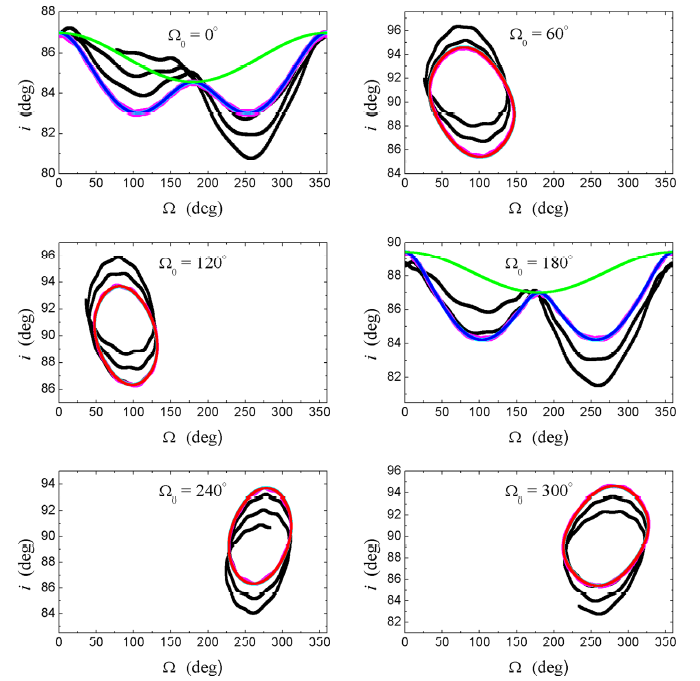Orbital plane precession is one of the significant dynamic phenomena in the long-term evolution of medium-high near-circular orbits. Theoretically, there are two types of possible precession mechanisms (i.e., the classical and polar Laplace precessions) for the long-term evolution of the orbital plane of medium-high near-circular orbits. Nevertheless, the theoretically quantitative and qualitative results from orbital plane precession of medium-high near-circular orbits in the previous researches (Zhao et al.2015, 2016) were restricted to the case of the classical Laplace precession, and the actual and real polar Laplace precession was neglected. Based on two types of possible precession mechanisms, we revised the analytical formulae of the quantitative variation ranges of orbital inclination derived by Zhao et al. (2015), and obtained the complete analytical formulae for medium-high near-circular orbits. We generalized the qualitative characteristic formula for the variation of orbital inclination-longitude of the ascending node of geostationary orbits in Zhao et al. (2016)to medium-high near-circular orbits, and obtained the more general analytical formulae. Taking the near-circular orbits with the altitudes as the geosynchronous and medium orbits of the Bei Dou navigation satellites as examples, we verified the theoretically quantitative and qualitative results from orbital plane precession by the first-order semi-analytical calculations with simplified models and numerical calculations with precise models to a certain extent. Moreover, we presented the specific quantitative and qualitative results for medium-high near-circular orbits with the given initial inclinations and different initial longitudes of the ascending node particularly, and summarized some conclusions. In particular, it is found that for the classical Laplace precession of the orbital plane of medium-high near-circular orbits with high inclinations, the long-term evolution of the orbital plane is in a state of circulation; i.e., the variation range of longitude of the ascending node is 0 to 360 deg. For the polar Laplace precession of the orbital plane, the long-term evolution of the orbital plane is in a state of libration; i.e., the longitude of the ascending node varies merely in a certain range, and the transition between prograde and retrograde motion occurs for these near-circular orbits with high inclinations (see Fig. 1), which might offer a reference for the orbit design to meet the particular mission requirement. Due to the high similarity of orbital plane precession of natural satellites to that of artificial satellites, the results and methodology can be directly extended to the long-term evolution of the orbital plane for natural satellites, and help to understand and explain some dynamic phenomena in the long-term orbital evolution of natural satellites. 
By with ZHANG Mingjiang Fig. 1Qualitative characteristics of the variation of orbital inclination-longitude of the ascending node for the long-term evolution of the initial near-circular orbits withan altitude 21528 km, initial inclination 87 deg, anddifferent initial longitude of the ascending node 0, 60, 120, 180, 240, and 300 deg. The work by Ming-Jiang Zhang, Chang-Yin Zhao, Jian-Ning Xiong, Ting-Lei Zhu, and Wei Zhang has been published inThe Astronomical Journal.Please. See the link for more details: https://iopscience.iop.org/nsearch?terms=Quantitative+and+Qualitative+Results+from+Orbital+Plane+Precession+of+Medium-high+Near-circular+Orbits |
